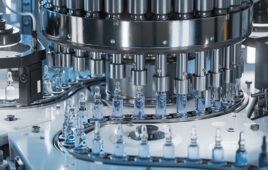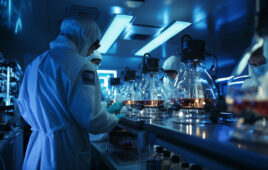
Photo by Sangharsh Lohakare on Unsplash
Cell and gene therapies are ushering in a new era of promise across a multitude of therapeutic applications, offering hope for overcoming previously insurmountable medical challenges. As a result, the sector has grown immensely, with more than 3,500 cell and gene therapies currently in development, from preclinical to pre-registration stages. Based on the current pipeline and clinical success rates of products, the FDA estimates that 10 to 20 new cell and gene therapy products will be approved annually by 2025.
While progress is certainly robust, these drugs present novel challenges and safety concerns that continue to threaten the pace of development and approval. Every stage of the complex, multi-step process of manufacturing cell and gene therapies introduces potential sources of contamination, even under carefully controlled conditions. These contaminants threaten the safety of the final product and the integrity of the entire development process.
Big threats in small packages
Cell and gene therapies are vulnerable to various common contaminants, including adventitious agents like bacteria, viruses and mycoplasma. Even trace amounts of these contaminants compromise product safety, quality and purity and can incur massive time and financial investment losses. In addition, unlike the production of other drugs, the biotherapeutics manufacturing process presents a unique risk: contamination by residual host cell DNA. To produce cell and gene therapies, cultured host cells function as factories that churn out the viral vectors used to deliver the final therapeutic product.
One of the most commonly used cell lines for this purpose is HEK293. Originally generated in 1973, HEK293 cells are derived from human embryonic kidney epithelial cells. These cells are relatively easy to use, can be cultured in suspension and boast a high transfection efficiency across various techniques. HEK293 cells are also ideal for producing adeno-associated viruses (AAVs), as they express a number of adenovirus genes. Because of this, they can be used to propagate AAV vectors in which these genes have been deleted to prevent infection and replication in human experimenters. The HEK293 line is a powerhouse in biotherapeutics production, with six HEK-derived cell and gene therapies approved since 2015.
Despite the cells’ utility in biotherapeutics production, potential HEK293 cell residual DNA contamination remains challenging. Following transfection and amplification of the viral vectors of interest, removing all traces of host cell DNA is virtually impossible. Even after purification, some DNA fragments can remain due to incomplete enzymatic digestion, possibly eluding filtration.
Any trace of residual host cell DNA remaining in a cell or gene therapy product could trigger a dangerous immune response. Additionally, DNA from immortalized host cell lines such as HEK293 could contain retroviral or tumorigenic sequences that could pose a serious risk to patients. Even if a contaminated product is never used, the heightened regulatory scrutiny, loss of raw materials and batch products, and delay in therapeutic production resulting from contamination can be devastating to a company. Reliable methods to detect even trace amounts of contaminants are thus essential to the purity and safety of cell and gene therapy products.
Common approaches for DNA contamination testing
Guidance issued by the FDA and World Health Organization (WHO) recommends that biotherapeutics developers “limit the amount of residual DNA for continuous non-tumorigenic cells to less than 10ng/dose and the DNA size to below approximately 200 base pairs. If you are using cells that are tumor-derived (e.g., HeLa) or have tumorigenic phenotypes (e.g., HEK293, HEK293T) or other characteristics that may give rise to special concerns, the limitation of specific residual DNA quantities may be needed to assure product safety…tests should be appropriately controlled and of sufficient sensitivity and specificity to determine the level of these sequences in your product.”
Quantitative PCR (qPCR) technology has been a common approach for quantifying residual host cell DNA and other contaminants in biotherapeutics production. While it has been invaluable to the growth of cell and gene therapies, qPCR technology has several limitations in this application. Because a qPCR workflow depends on comparing bulk sample measurements to a reference control, reproducibility can be challenging. Additionally, qPCR-based assays for HEK293 DNA can also cross-react with background DNA and report erroneous concentrations. qPCR methods require time- and labor-intensive sample extraction to remove PCR inhibitors, which also presents a further risk of variability in results.
How ddPCR technology is changing the field
Since its introduction in 2011, Droplet Digital PCR (ddPCR) has emerged as the gold standard for molecular detection, offering key advantages over qPCR methods for biomanufacturing. Unlike qPCR, which relies on a standard curve, ddPCR technology provides absolute quantification of a target sequence in a sample. By partitioning a sample into 20,000 individual droplets, performing PCR amplification in each droplet and reading the concentration of positive and negative droplets, ddPCR assays precisely quantify the number of copies within the sample. The technique is also highly sensitive, detecting DNA and RNA targets down to 0.1 pg/uL, which is ideal for catching even trace contaminants in biotherapeutics. Importantly, ddPCR technology is also inhibitor-tolerant, making sample extraction unnecessary. This makes for a simpler, more streamlined workflow that minimizes sample manipulation and reduces the risk of human error.
The growing field of cell and gene therapy holds massive potential for solving persistent medical challenges. However, developing and manufacturing of these advanced biotherapeutics have presented novel problems demanding innovative solutions. To guarantee the safety and purity of cell and gene therapeutics, ddPCR technology has emerged as the gold standard for precisely detecting residual host cell DNA and other contaminants. ddPCR technology provides the sensitivity, specificity, and reproducibility to meet regulatory demands in biomanufacturing, helping developers proceed with confidence in manufacturing cell and gene therapies.
Marwan Alsarraj is the biopharma segment manager at Bio-Rad. He has been at the forefront of developing, marketing and commercializing technologies for the past 15 years in the life science research industry. Marwan obtained his MS in biology at the University of Texas, El Paso.
Filed Under: Cell & gene therapy





Tell Us What You Think!
You must be logged in to post a comment.